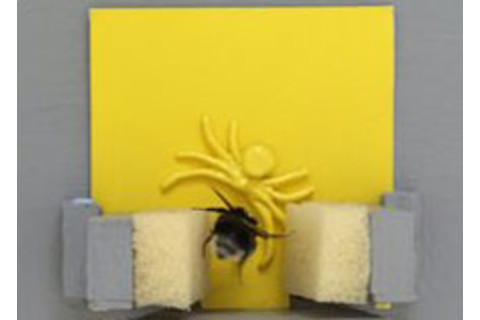
Bumblebees that have a close encounter with a dangerous predator are still cautious and wary the next day, even though their trepidation slows them down as they forage for food. In a new study, researchers used robot spiders to briefly trap the bees and study their behavior afterwards, and found that
in the end, some of the bumblebees get a little paranoid.... “They’re behaving as if they’re starting to see ghosts,” [co-author Lars] Chittka says [Science News].
The researchers used small robots to imitate the look and behavior of crab spiders, which
are one of the major predators of bumblebees. They lie in wait in flowers which the bees need to visit to collect nectar, and are difficult to spot because they can change colour to match their surroundings [New Scientist].
To study the impact of an interaction between a bumblebee and a fearsome crab spider, researchers created a "meadow" with artificial yellow flowers. Co-author Thomas Ings explains:
"The bees behave very much as they do in nature: they go from one flower to the other as they empty it of food." ... "Dangerous" flowers harboured life-sized, robotic crab spiders with two remote-controlled, foam pincers. The bees were introduced to a meadow containing well hidden (yellow) or highly visible (white) spiders [BBC News].
If a bee landed on a flower with a spider on it, the pincers briefly squeezed shut before setting the bee free again.
The study, which is forthcoming in the journal Current Biology [subscription required], shows that after a bee had been trapped it changed its flight patterns, taking longer to inspect each flower before deciding whether or not to land on it. Bees that had been caught by a camouflaged spider were particularly wary, researchers found, and continued their slower flights the next day.
"The cost of "dithering" extensively to inspect every flower is that a bee is slowed down considerably in its foraging," said Prof Chittka. "Ultimately this will negatively affect honey collection for the hive - but a slow forager is better than a dead forager" [Telegraph].
Image: L. Chittka













